What Are Hair Implants And How Are They Used to Treat Hair Loss?
Hair implants, specifically artificial hair implants like Biofibre®, are a hair restoration technique where synthetic hairs are implanted into the scalp. Biofibre® is a type of medical-grade polyamide fiber known for being sterile, inert, UV-resistant, and highly biocompatible.
This technique can be considered when natural donor follicles are insufficient or when used to conceal scars on the scalp.
Patient Suitability For Hair Implants?
Suitability depends on several factors:
- Medical History: Patients with certain conditions, such as autoimmune diseases or chronic scalp issues like non-stabilized alopecia areata, may face increased risks of adverse effects, including infections.
- Type Of Hair Loss: Hair implants are a surgical solution, typically reserved for extensive hair loss cases. Those with mild or treatable hair loss (e.g., due to vitamin deficiencies) might benefit more from other treatments.
- Lifestyle considerations: Post-procedure aftercare is crucial. Patients must keep the area clean and avoid activities that induce heavy sweating to reduce complication risks. Those unable to adhere to aftercare may find this procedure unsuitable.
Results and tolerance can vary by patient. A thorough medical assessment is essential to determine if hair implants are the right solution. Research content is provided for informational purposes only and should not be considered a substitute for professional medical advice.
Medical Assessments Required Before Receiving Hair Implants
Hair implantation outcomes can vary, and thorough medical evaluations are vital to ensure patient suitability and safety. Key assessments include:
- Blood tests: Hair implantation outcomes can vary, and thorough medical evaluations are vital to ensure patient suitability and safety. Key assessments include:
- Complete Blood Count (CBC).
- Urea, Creatinine.
- Bilirubin (Total and Direct).
- Gamma-Glutamyl Transferase (GGT).
- Alanine Aminotransferase (ALT).
- Aspartate Aminotransferase (AST).
- Fibrinogen.
- Treponema Pallidum Haemagglutination (TPH).
- Anti-HIV, Hepatitis A, B, and C Markers (HbsAg).
- Erythrocyte Sedimentation Rate (ESR).
- Venereal Disease Research Laboratory (VDRL).
- Prothrombin Time (PT), Partial Thromboplastin Time (PTT).
- C-Reactive Protein.
- Fasting Blood Sugar Levels.
- Serum Protein Electrophoresis.
- Urinalysis: Assesses overall health through urine analysis.
- Electrocardiogram (ECG): Monitors heart health and detects any cardiac issues.
- Implant tests: patients should initially receive the implant with only a small amount of fibers to assess tolerance. If tolerated, larger sessions can be added.
Frequently Asked Questions About Hair Implants
Are Hair Implants Permanent And Can It Be Reversed?
Hair implants are not permanent. Each synthetic fiber can be removed.
Will Artificial Hair Implantation Be Painful?
Yes, the treatment will have a certain pain and discomfort experienced during and post treatment. Local anesthesia is used during the procedure to minimise pain.
What Are Possible Side Effects of Undergoing Artificial Hair Implantation?
Medically recorded side effects of artificial hair implantation can range from mild to severe and include:
- Spontaneous fiber loss.
- Tenderness and erythema (redness).
- Pus development due to infection.
- Persistent pain and itching.
- Inflammation .
- Bacterial infection.
- Peri-implantitis and folliculitis (inflammatory conditions affecting the scalp).
- Overreaction of the immune system to the implanted fiber.
In a few cases, serious side effects have also been reported such as:
- Osteomyelitis (bone infection) .
- Infective endocarditis (infection of the heart lining).
As with all medical interventions, side effects may vary depending on individual health conditions. Speak to the aesthetic doctor in detail during the consultation to identify possible side effects you may face from the treatment
Downtime Of Undergoing Artificial Hair Implant Procedure
Recovery time can vary significantly depending on the severity of side effects. The average healing time is around 2 weeks. However, individual recovery times can differ based on personal health, adherence to post-procedure care instructions and presence of further complications.
Schedule a consultation to speak to our doctors
Disclaimer: Information presented is accurate at the time of print. Websites and references listed are not endorsed by 21 Medical Aesthetics and do not necessarily reflect the views of our medical team. Information is researched and displayed for demonstrative purposes only. It should not be used for personal diagnosis or as a substitute for professional medical consultation.
External Links
| A lesser known medical intervention for hair loss - PRP (platelet-rich plasma) Therapy. |
| Singapore Local Medical Research Resources & Associations |
| Informed Decisions for Hair Loss: A Resource of Credible Clinical Studies |
| Navigating Hair Restoration: A Guide to Reliable International Medical Journals |
Sources:
https://pmc.ncbi.nlm.nih.gov/articles/PMC7369527
https://pmc.ncbi.nlm.nih.gov/articles/PMC5816310
https://pubmed.ncbi.nlm.nih.gov/17214677
https://pubmed.ncbi.nlm.nih.gov/33565339
https://pmc.ncbi.nlm.nih.gov/articles/PMC5816292
Sources For Reference To Check Reliability:
| Journal | Relevant Information Extracted | Reliability |
| https://pmc.ncbi.nlm.nih.gov/articles/PMC7369527/ | what is artificial hair implant & its side-effects of hair implants. | Peer reviewed. Open Access. Impact factor 12.8. Journal of the American Academy of Dermatology Case Reports. |
| https://pmc.ncbi.nlm.nih.gov/articles/PMC5816310/ | Explanation about biofibre Healing time | Peer reviewed. Open Access. Impact factor 0.45 Open Access Macedonian Journal of Medical Sciences. |
| https://pubmed.ncbi.nlm.nih.gov/17214677/ | Hide scalp scars | Impact factor: 2.5 Peer-reviewed. Open Access |
| https://pubmed.ncbi.nlm.nih.gov/33565339/ | Useful when no donor area is suitable | Peer-reviewed. Open Access. Impact factor: 2.9 Published by taylor and francis Journal of Dermatological Treatment |
| https://pmc.ncbi.nlm.nih.gov/articles/PMC5816292/ | Some after care information More information on patient screening such as blood testing etc. | Peer reviewed. Open Access. Impact factor 0.45 Open Access Macedonian Journal of Medical Sciences. |
